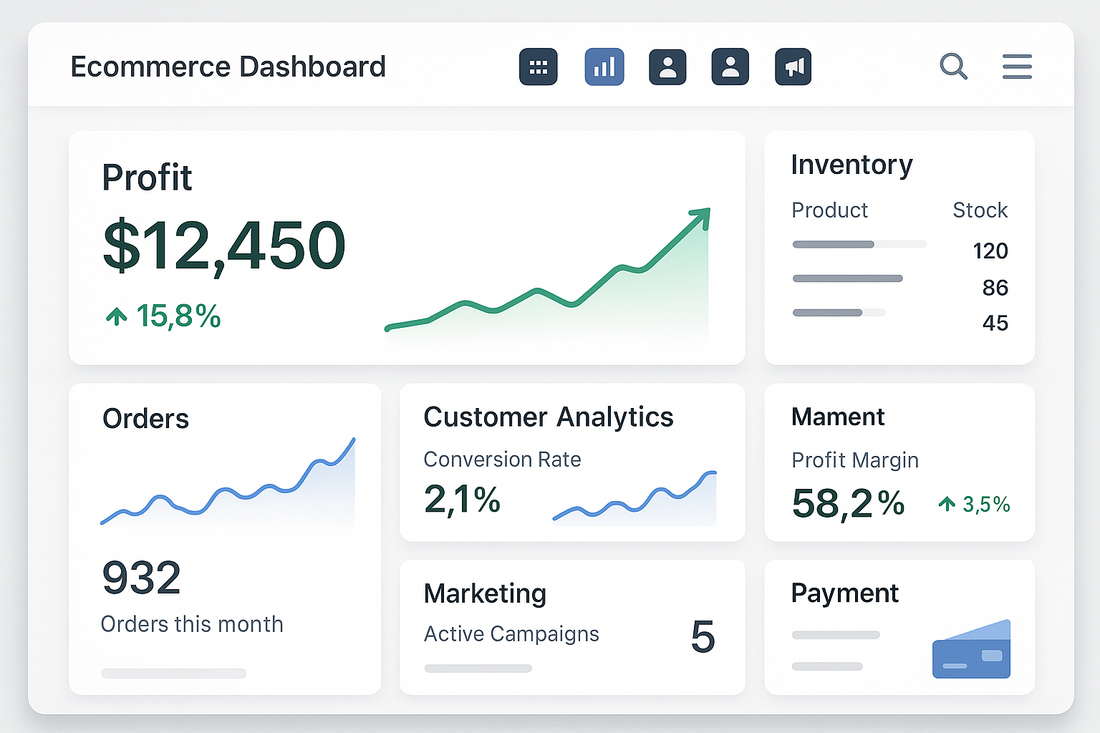
The Hidden ROI of a Unified Tech Stack
Share
Introduction
Running a multi-channel ecommerce business often feels like you’re juggling knives on a treadmill. You’ve got listings on eBay, maybe Shopify, Amazon, TikTok Shop—plus your own backend operations, customer comms, and data flying everywhere. The real question is: how much of your time is actually spent growing your business versus just holding it together?
This is where the idea of a unified tech stack starts to pay serious dividends. Not just in saved hours—but in cold, hard profit.
What Is a Unified Tech Stack Anyway?
A unified tech stack is a group of tools that work together—not just coexist. That means your inventory syncs across platforms, your customer messages land in one place, your analytics are centralised, and your team isn’t copying and pasting between tabs.
Think less chaos, more clarity. And with clarity comes efficiency, speed, and happier customers.
The Real ROI of Streamlined Systems
Let’s break it down. Here’s where the hidden return on investment (ROI) lives when you unify your stack:
1. Time Savings = Cost Savings
- No more double entry across platforms
- Fewer errors in orders, listings, or tracking info
- Faster onboarding for new team members
Translation: You and your team can spend more time on growth—not firefighting.
2. Better Data = Better Decisions
When your stack talks to itself, you finally get a single source of truth. No more guessing which channel is driving the most repeat customers or which products are slowing down operations.
Unified reporting means:
- Accurate profitability by channel
- Clear visibility on stock levels and demand
- Smarter forecasting and reordering
3. Happier Customers = Higher Retention
Customer experience is make-or-break in ecommerce. And fragmented systems often lead to:
- Slower responses
- Late shipments
- Inconsistent branding
With the right stack, you respond faster, ship sooner, and create experiences customers want to come back for.
4. Platform Resilience = Reduced Risk
Relying on a single platform like eBay or Amazon is risky. But jumping across too many with disconnected tools is just as dangerous.
Unifying lets you:
- Diversify safely
- React faster to policy changes
- Shift focus based on channel performance
Which Tools Make the Difference?
Here’s a stack that delivers high ROI without drowning you in complexity:
-
Inventory Management: Linnworks, Sellbrite
-
Order Syncing: ShipStation, Zenstores
-
Customer Comms: eDesk, Gorgias
-
Email & Automation: Klaviyo, MailerLite
- Reporting: Your ecommerce platform’s built-in tools or custom dashboards via Databox
Cost vs Return: A Thought Experiment
Let’s say you invest £150/month in a connected tech stack. Sounds steep—until you realise it saves you 10 hours a week of admin, reduces your return rate by 2%, and improves reorder volume by 5%.
Across a £250k/year store, that’s thousands in improved margin—and sanity.
FAQs
Isn’t it expensive to unify your stack?
It depends. But not doing it costs you more in hidden inefficiencies, lost sales, and burnout. Most tools pay for themselves fast.
How do I know if I’m ready for this?
If you sell on more than one marketplace and use more than one app for shipping, support or emails—you’re ready. Even more so if your team feels overwhelmed.
How do I choose tools that integrate well?
Look for open API access, integrations with your current channels, and strong customer support. Read reviews from other marketplace sellers, not just DTC brands.
Conclusion
A unified tech stack isn’t just nice to have. It’s your unfair advantage in a crowded, margin-pressured market. The return might not always show up on the balance sheet—but it’ll show up in time saved, customers retained, and growth unlocked.
Want to see exactly where your tech could be smarter? Sign up for the 30 Day Newsletter and get practical, seller-tested ideas to optimise your entire tech ecosystem—one smart move at a time.
